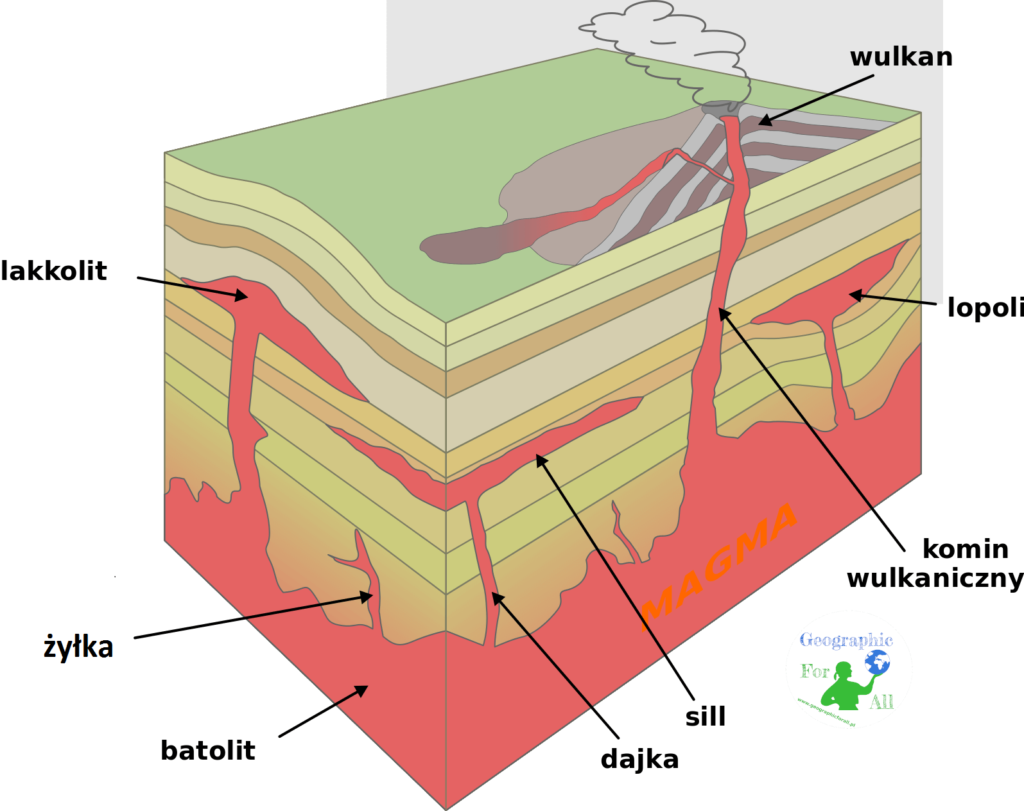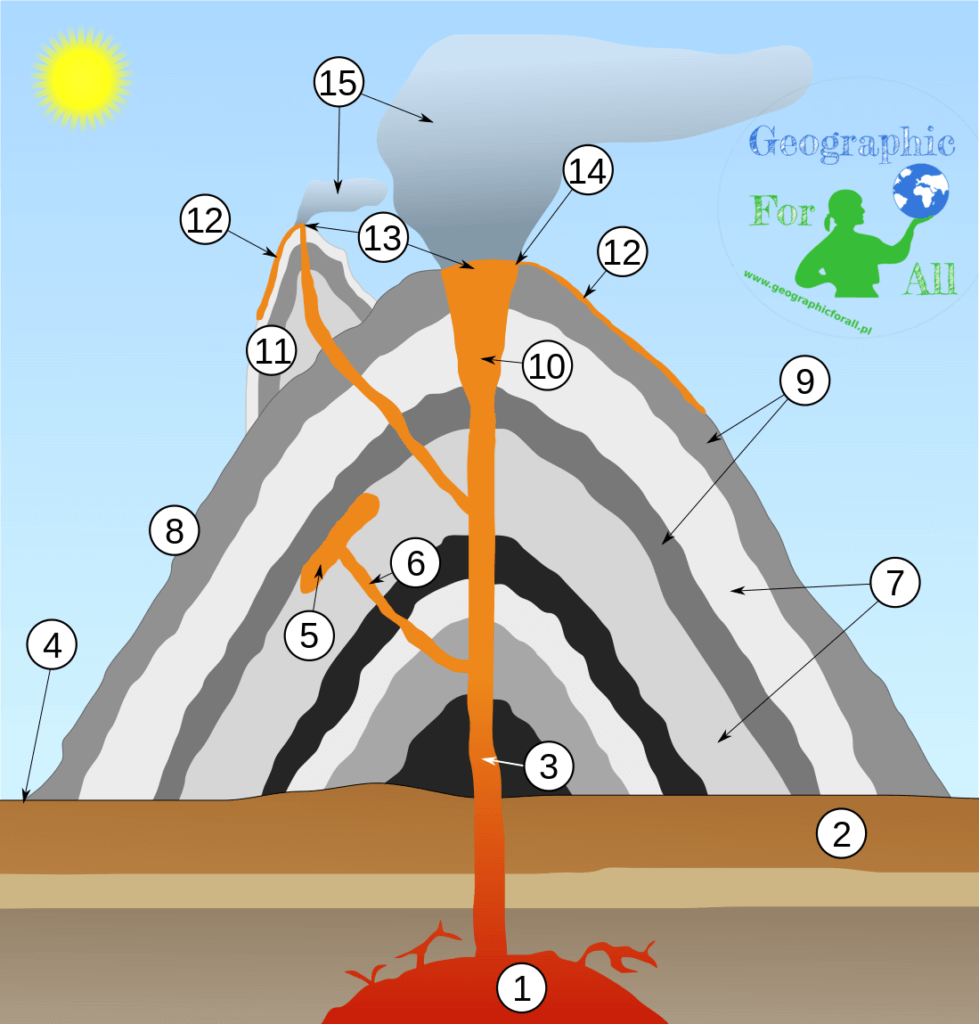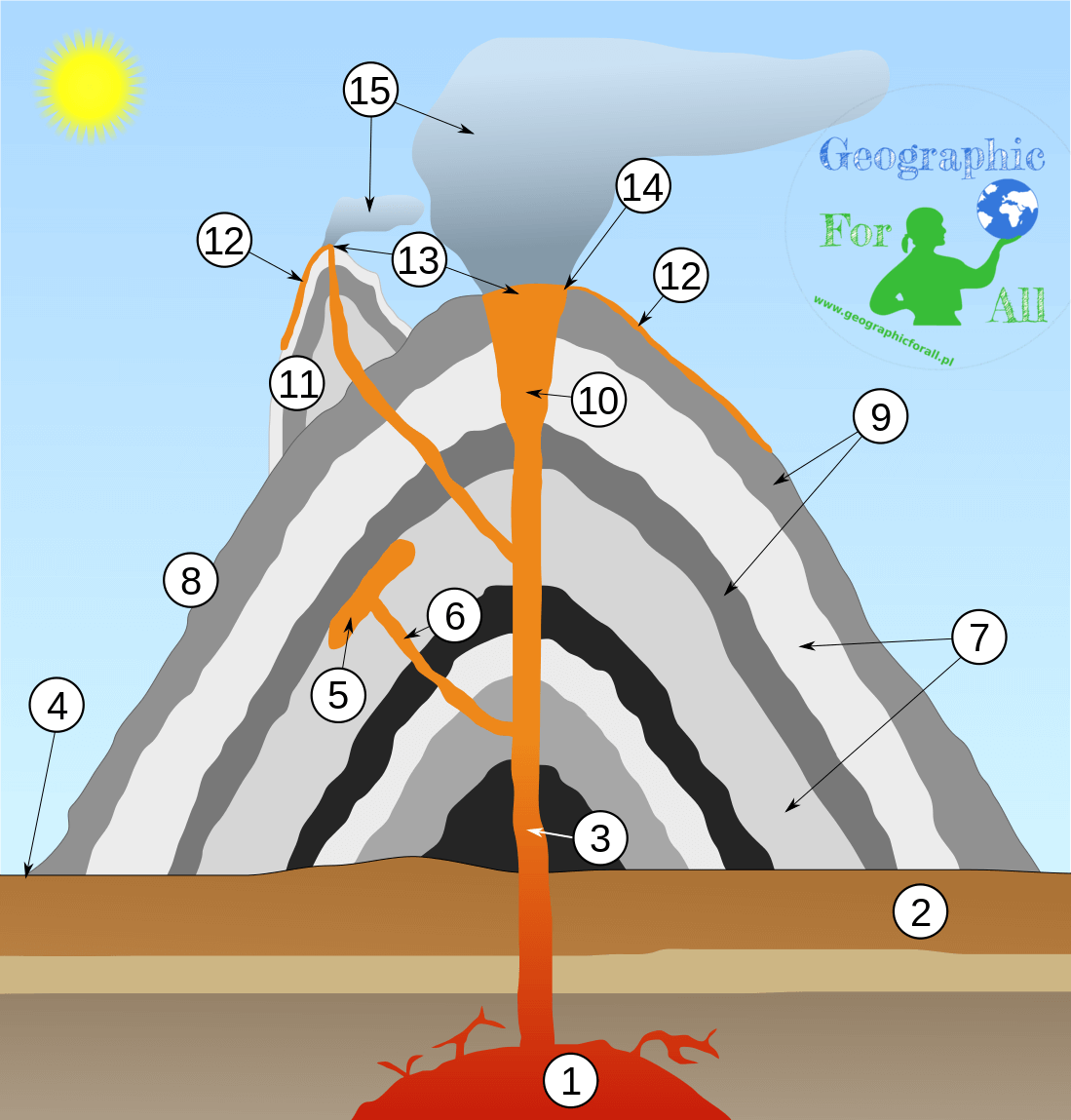Plutonism
As long as magma is underground, we are talking about plutonism. Hot masses squeeze into the environment creating magmatic intrusions. We divide them into:
- compatible intrusions – lacolytes, sillees and lopolites – magma drills a place for itself between the rock layers
- incompatible intrusions – dikes, lines and batoliths – magma breaks the continuity of rock layers

Volcanism and volcano structure
Magma, wandering up, slowly freezes, creating lava. Once it leaves the Earth, we’re talking about volcanism. It is not only associated with volcanoes in the sense of a single cone – the entire subduction zone is one huge volcano, then called linear 🙂 Volcanoes can be expired (no activity in historical times), dormant or active.

The main component of the volcano is the main conduit (3), from where lava can form dikes (6) and parasitic cones (11) or magmatic intrusions e.g. sills (5). The cone itself is built with subsequent explosions from layers of ash emitted by the volcano (7 and 9). At the very tip it expands to form a throat (10), ending with vent (13). It is also worth mentioning the caldera – an extinct and collapsed or exploded crater with a fragment of the cone.
Types of lava and volcanic eruptions
Products of volcanic eruption or activity are:
- exhalations (fumes) of gases and steam
- fumarole – gases and steam in the temperature range 200-800 degrees Celsius
- mofety – cold gases mostly carbon dioxide
- solfatars – steam and sulfur at 100-300 degrees Celsius
- pyroclastic material
- volcanic bombs – they reach several meters in length and 200 tons of weight
- sand
- ashes
- Lapilles – mini bombs, from 2 mm to 6.4 cm
- lava (breakdown by silicon dioxide content)
- acid / andesidic – thick, viscous, flows slowly, solidifies quickly, forms conical volcanoes
- alkaline / basalt – thin, not very sticky, flows fast, freezes, forms disc volcanoes
- intermediate
And now the question to think: you are under the peak of an erupting volcano. Lava is about 1000-1400 degrees, it will freeze after reaching about 600-800 degrees. Hot. Would you prefer to deal with acid or alkaline lava?
Sour? Because it flows more slowly (about a few centimetres per hour) and you will run away? Wrong answer 🙂
Acid lava often plugs the crater, which causes a violent explosive eruption with a rain of volcanic bombs, etc. And alkaline lava will catch up with the refugees faster (speed around 30-50 km / h), but will not cause a bombing raid 🙂 we call this explosion effector eruption. Anyway, choose for yourself.
At home, you can play volcanic eruptions and check the theory above. Here are a few different experimental sets: set 1, set 2, set 3.
And here the volcanoes for fun, which is one of the books of my favorite series: Monstrous Erudition Angry volcanoes and for those interested Practical geography of volcanoes.


0 Comments for “Plutonism and volcanism”